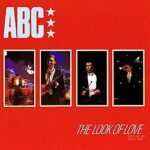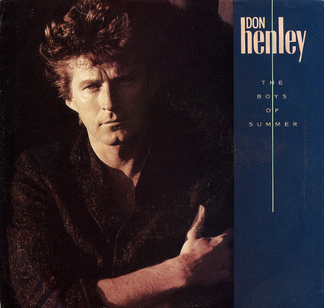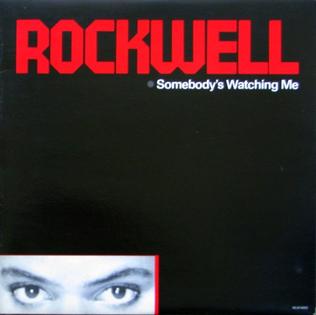 ABC’s The Look of Love, released in 1982 as part of their groundbreaking debut album The Lexicon of Love, is a shimmering exemplar of early 1980s new wave sophistication. Produced by Trevor Horn, the track blends lush orchestration, sleek production, and pop sensibilities with a romantic sensibility that feels both timeless and emblematic of its era. With Martin Fry’s charismatic vocal delivery at the forefront, The Look of Love demonstrates how ABC could take the drama of classic pop and marry it with the sonic innovations of the burgeoning new wave scene, creating a track that remains iconic decades after its release.
ABC’s The Look of Love, released in 1982 as part of their groundbreaking debut album The Lexicon of Love, is a shimmering exemplar of early 1980s new wave sophistication. Produced by Trevor Horn, the track blends lush orchestration, sleek production, and pop sensibilities with a romantic sensibility that feels both timeless and emblematic of its era. With Martin Fry’s charismatic vocal delivery at the forefront, The Look of Love demonstrates how ABC could take the drama of classic pop and marry it with the sonic innovations of the burgeoning new wave scene, creating a track that remains iconic decades after its release.
From the opening bars, The Look of Love announces its elegance and emotional immediacy. The song begins with a soft, ethereal synthesizer pad that sets a dreamy atmosphere, immediately signaling the marriage of traditional pop romanticism with modern electronic textures. This intro gracefully gives way to a crisp, disciplined rhythm section, punctuated by percussion that keeps the song moving without ever dominating. The arrangement is meticulous, balancing instrumental richness with clarity, ensuring that every element—from the lush strings to the precise keyboard lines—serves the song’s narrative of yearning and romantic allure.
Martin Fry’s vocals are the heart of The Look of Love. His delivery is simultaneously polished and passionate, exuding a refined sophistication while communicating genuine emotion. Fry’s phrasing is impeccable, navigating the subtle swings between intimacy and drama with ease. There is a theatricality to his voice, but it is never overwrought; every note feels intentional, every inflection measured to maximize emotional resonance. Lines like “I’ve waited for someone like you” are elevated from simple romantic statements to proclamations of desire, drawing the listener into a world of glittering romance and stylish longing. Fry’s performance perfectly bridges the divide between pop star charisma and new wave cool, making the track feel both accessible and artistically ambitious.
Trevor Horn’s production elevates The Look of Love to a level of sonic sophistication rarely seen in pop music at the time. Known for his meticulous attention to detail and innovative use of studio technology, Horn employs layering, orchestration, and subtle effects to create a rich, immersive soundscape. The strings swell gracefully, adding a sense of cinematic drama, while the rhythm section maintains a steady, unobtrusive pulse. The keyboards shimmer in the background, providing harmonic texture and a modern edge, signaling the intersection of traditional pop balladry with the electronic sensibilities of the early 1980s. Horn’s production ensures that every element is clear and purposeful, creating a track that feels luxurious and expansive while never losing focus on Fry’s vocals.
Musically, The Look of Love is a masterclass in combining romantic pop with new wave innovation. The harmonic progression is lush yet approachable, incorporating chord changes that evoke longing and sophistication without feeling overly complex. The melody is instantly memorable, with the chorus serving as a perfect emotional anchor. The rhythm section, anchored by Mark White’s bass and David Palmer’s drums, provides a steady, driving pulse that supports the song without overpowering it, while the orchestral arrangements give the track a sense of grandeur and scale. The combination of traditional pop sensibilities with the precise, modern textures of new wave production creates a track that is both timeless and distinctly of its era.
Lyrically, The Look of Love is romantic without being cloying. The song captures the subtle nuances of attraction and desire, exploring the power of eye contact and emotional connection. Lines like “I’ve waited for someone like you” and “Your eyes are like a mirror reflecting all I want” are elegantly simple, yet they carry depth and sophistication. The lyrics avoid the overly sentimental clichés of many contemporary pop songs, instead offering a polished, stylish perspective on love that complements the music’s refined production. The interplay between the lyrics and the lush instrumentation creates a cohesive emotional experience that is as compelling now as it was in 1982.
The song’s placement on The Lexicon of Love album is significant. The record as a whole is a carefully curated blend of romantic drama, pop sophistication, and sonic experimentation, and The Look of Love functions as a centerpiece of this vision. It exemplifies ABC’s ability to craft songs that are both commercially appealing and artistically ambitious. While other tracks on the album experiment with funk, dance, or electronic textures, The Look of Love is a demonstration of how the band could deliver pure pop elegance without sacrificing the forward-thinking production and stylistic daring that defined the album.
The influence of The Look of Love extends beyond its immediate commercial success. The song reached number four on the UK Singles Chart, solidifying ABC’s status as one of the premier new wave acts of the early 1980s. Its success demonstrated that sophisticated, lushly produced pop could thrive in an era increasingly dominated by synth-driven dance music and punk-influenced minimalism. Moreover, the track’s aesthetic—a combination of style, emotion, and musical precision—helped define the visual and sonic identity of early 1980s new wave, influencing contemporaries and future artists alike.
ABC’s integration of orchestration and electronic elements on The Look of Love is particularly noteworthy. The string arrangements, carefully layered and dynamically expressive, give the song a sense of grandeur often reserved for traditional pop ballads or cinematic scores. Yet, these orchestral touches are interwoven with synthesizers and electronic percussion, creating a hybrid sound that is modern without sacrificing warmth or emotional depth. This blending of classic and contemporary textures was innovative at the time, positioning ABC as a band capable of bridging eras and genres with grace and sophistication.
Live performances of The Look of Love further showcase its enduring appeal. Martin Fry’s stage presence, combined with the song’s lush instrumentation, creates a captivating experience. The track translates beautifully to a live setting, with the orchestral flourishes and rhythmic precision adapted to convey the same elegance and drama as the studio version. Audiences are drawn into the romantic narrative, and the song’s polished musicality ensures that it remains compelling even decades after its release.
The cultural legacy of The Look of Love is substantial. It is widely regarded as one of the definitive tracks of the 1980s new wave movement, representing a moment when pop music could be stylish, emotional, and forward-thinking all at once. Its influence can be heard in the work of later artists who sought to blend lush orchestration with modern production techniques, from the sophisticated synth-pop of the late 1980s to contemporary indie-pop acts who draw on its polished aesthetic. The song remains a touchstone for anyone exploring the intersection of romance, sophistication, and sonic innovation in popular music.
Ultimately, The Look of Love exemplifies ABC’s unique ability to combine artistry and accessibility. Every element—the vocals, lyrics, orchestration, rhythm section, and production—works in harmony to create a song that is elegant, emotionally resonant, and unmistakably stylish. Its success in 1982 cemented ABC’s place in music history and established a blueprint for sophisticated pop that still resonates today.
The song’s enduring charm lies in its balance of emotional intimacy and musical grandeur. Listeners are drawn into the romantic narrative while simultaneously appreciating the technical precision and production finesse that defines the track. Martin Fry’s vocal delivery is both charismatic and heartfelt, capturing the sophistication and longing at the song’s core. The orchestration and synthesizer textures create a lush sonic environment that enhances the lyrics and melody, ensuring that every listen reveals new layers of detail and artistry.
ABC’s 1982 The Look of Love remains a high-water mark in pop music, demonstrating how a band could combine new wave innovation with romantic sophistication to create something both timeless and emblematic of its era. Its lush production, memorable melodies, and elegant lyricism continue to captivate listeners, proving that great pop music is not just about immediacy—it’s about creating a lasting emotional and artistic impact. The song endures as a shimmering exemplar of 1980s musical elegance, a track that defines a moment in time while remaining fresh, polished, and endlessly enjoyable.
The Look of Love is a testament to ABC’s artistry, a track where romance meets meticulous craftsmanship, and emotion meets sophistication. It showcases the band at their peak, blending lush orchestration, precise rhythm, and memorable vocals into a song that transcends its decade while perfectly capturing it. It remains not only a defining single of the 1980s but a timeless piece of pop music that continues to charm, inspire, and resonate with listeners across generations.


